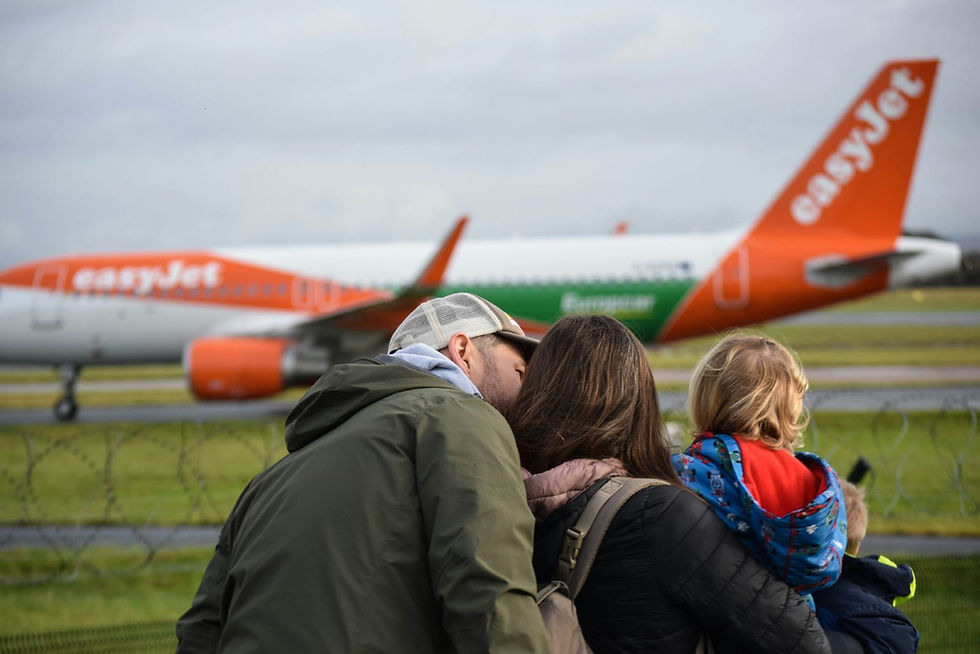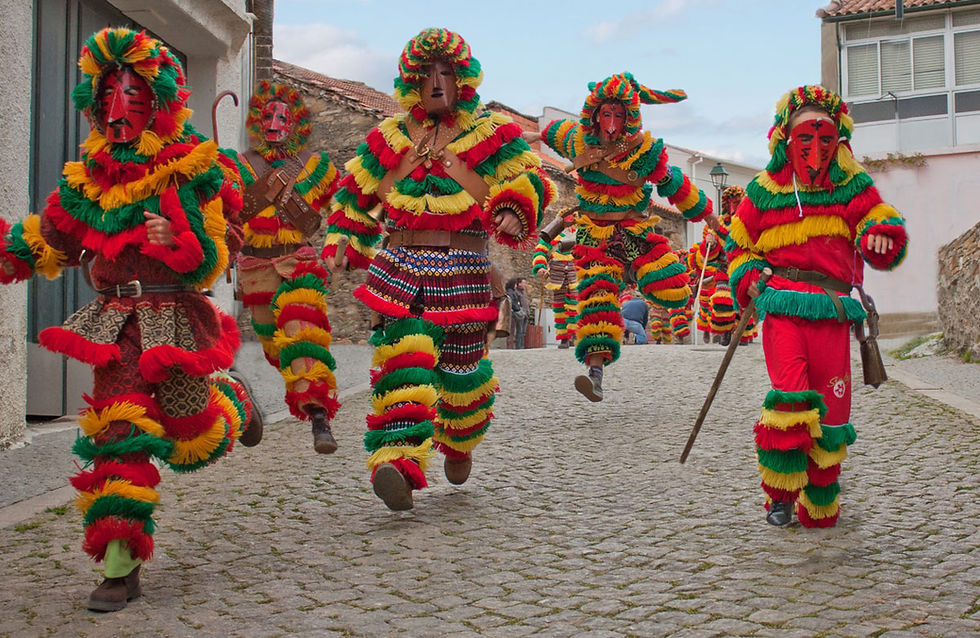How to Experience Moana in Tahiti
- Katie Doyle

- Feb 17
- 6 min read
I always thoughts adults who like watching Disney Movies were a little bit.. odd? Growing up, I loved The Little Mermaid and The Lion King, but the minute I turned 12 that all seemed a little passé. The launch of Brave in 2012 almost lured me back in- a wee Scottish lass would've helped my bruised ginger ego in childhood and I started to think I should really be giving Disney movies another chance.
When Moana launched in 2012, and I watched it with a younger cousin, I was immediately entranced. And it wasn't just the beautiful animation, the cutesy elements of Pua the pig and the hilarity of Heihei the chicken's bulging eyes, the Rock's character's rap songs and interactive tattoos and, of course, the extremely catchy songs. It wasn't even the luscious hair of Moana herself. It was all of these elements, of course, but what really struck me was the storytelling of the film, the promotion of Tahitian culture and the legend that lies at the heart of the film.

I truly didn't know a lot about this Island in French Polynesia, its history or culture, or even where to point it out on the map but Moana made me curious. Why were her parents so keen on her staying on the island to take over the role of chief of the village? Was Maui a true character in Polynesian culture? And most importantly, what sort of goddesses did (or do) these people worship and what stories make up their canon of legends and myths? I was worried to look too closely; to ruin the beautiful world that Disney had created, and afraid to find out it was all lies. But, I was happily proved wrong. Māui is a real trickster demigod prevalent in Polynesian legend. While Te Fiti (the goddess character at the centre of the first film) isn't real, she was certaintly inspired by Papatūānuku, the Earth Mother from Maori mythology, who, with her partner Sky Father Ranginui, created everything — kind of like the original power couple.
I researched further, and found out that unlike some films that are not accepted by the cultures and people of which the film is inspired- most people from the Polynesian island concur that this film is a positive reflection, bringing island culture and customs into the mainstream.
This all begs the question, can you visit Tahiti and engage in their local culture and have a positive impact? Can you have your own Moana experience without exploiting local traditions and customs for a quick Instagram post? The answer is Yes! Tahitians are renowned around the world as welcoming, kind and generous with explaining and immersing locals with traditions that have been passed down for thousands of years.
Sail Like Moana on the South Pacific Ocean

A huge aspect of both Moana and Moana 2 released in 2024, is the discovery of the ancient sail boats used by her people before they settled on the land. And in the films Moana and Maui sail on a traditional Polynesian double-hulled outrigger canoe called a wa'a kaulua. On which Moana learns to navigate her way across the ocean with the use of the cosmos and her divine responsibility of saving the day. And this ability to navigate the oceans is a skill renowned and revered in Polynesian cultures where sailors could set a safe course towards their destination using their knowledge of the stars, horizon and look and feel of the ocean swells.
The best part is the depiction of these long range sailing canoes are quite accurate and real versions of them are available to rent across Tahiti. The best thing is, nobody's expecting you to navigate by using the stars! Made from the same materials used for making their homes, for sleeping, cooking, and storage of supplies.
With Moana Explorer you can live the Polynesian culture for a morning or an afternoon, with family, couple or friends. Embark aboard a traditional sailing canoe and let yourself sail on the turquoise lagoon, savor the pleasure of navigation and the beauty of Tahiti. During the trip, culture, connection to nature, sharing and the discovery of traditional navigation will be at the rendezvous. You can find this experience in the town of Arue!
Weave a Basket with a Tahitian

In the first Moana film- in one of most popular clips "Where You Are" you can see the baskets used by the Tahitian people when they're talking fervently about their coconuts and why Moana should stay and become Chief of their community. It's only in the second film where we see the details of this ancient craft of the Tahitian people. When Moana's too-cute sister Simea is weaving baskets with her parents, awaiting the return of Moana, we see a beautiful depiction of this ancient Tahitian craft.
But basket weaving in French Polynesia is not just a craft; it’s a rich tradition passed down through generations. The tradition is perceived as a form of art, reflecting the Polynesian culture, history, and identity. From the selection of materials to the weaving techniques, every step is a testament to the skill and dedication of the artisans that produce the baskets.
If basket-weaving is your bread and butter, visit Tahiti in July. This is when the Heiva Rima'i takes part- a craft fair that brings together hundreds of artists from the five archipelagos every year. Find out more about the festival here: https://www.heiva.org/en/heiva-rimai/
Learn to Dance like Gamma Tala

One problematic theme of the Moana movies, as cited by real Pacific Oceaners is the trope of Grandma Tala who is portrayed as an outcast on the edge of society, adhering to old customs and regarded as a little insane. Personally, she's on of my favourite characters of the film- she's so in-tuned with nature that she knows the sea is calling Moana to fulfill her destiny. She teaches her the dance of their people and then she's off on her little side of the island just vibing.
In Tahiti, this is a real dance called the 'Ori Tahiti and each element has a cultural symbol that represents the deep underlying connection between the islanders and the land they live in. Woven pandanus tree leaves represent nature and the land. Seashells are the ocean and its rich variety of marine life. Feathers, often worn in headpieces, symbolize the grace and beauty of the birdlife. And flowers are the vitality and joy of life inherent in every Polynesian.
For those new to the vibrant world of Tahitian dance, workshops offer a fantastic starting point. Beginners can immerse themselves in the basics of Tahitian dance through various workshops tailored to their skill level. These workshops are designed to provide a supportive and educational environment where novices can learn the fundamental steps and rhythms.
Workshops not only teach the dance but also often delve into the cultural significance behind the movements, providing a holistic learning experience.
Here’s a list of beginner-friendly workshops to consider:
Soul Sanctuary Dance: A community dance gathering focusing on freestyle movement.
Dance Week: Teen Hip-Hop Workshop with Koozi: Although not specifically Tahitian, this workshop offers foundational dance skills useful in any genre.
Presence in Movement & Touch: An introduction to Breema, which can complement the fluidity and grace required in Tahitian dance.
Watch a Real Tahitian Ceremony with Firewalkers

Ceremonial wear and traditional festivals are evident throughout the two Moana films, and if you're looking to immerse yourself in a real Tahitian ceremony involving real firewalkers and chieftains then you should be planning to visit Tahiti at the end of the June and beginning of July.
Each year, a firewalking ceremony signals the start of the traditional Heiva festival. The tahua, the Tahitian priest, prepares a long trench filled with a fire of wood and dried coconut palms covered with volcanic stones. The fire burns for between 24 and 48 hours, until the stones are white hot. Then the ceremony can begin. After a series of incantations, volunteers are invited to walk across the hot stones. Apparently, this serves to purify the body and the spirit. It probably also helps to warm up those volunteers who had cold feet!. The Umu ti, Polynesian firewalking, is an experience that's spiritual, cultural and physical. After a series of incantations, the master of ceremonies invites volunteers from the audience to walk across a path of white-hot stones.
Swim with Manta Rays

Throughout both films, but particularly in Moana 2, Moana is guided by manta rays that lead her to safety on her journey across the oceans. If swimming with marine life is something that's been on your bucket list then Tahiti is an ideal location to make your dreams come true!
There are a range of experiences in Tahiti, depending on where you are, where you can find unique experiences to have a close encounter with these beautiful wild animals while snorkeling around a lighted raft. In-water guides help find mantas feeding at the surface after dark and ensure the safety and comfort of their guests. Their earlier launch time includes sunset and is the most popular manta snorkel, but you won't enter the water until it's dark so don't let the early check-in time fool you! "Late manta" is also a night adventure that usually means fewer people in the water, so you have the same chance of seeing mantas on either charter!








Comments